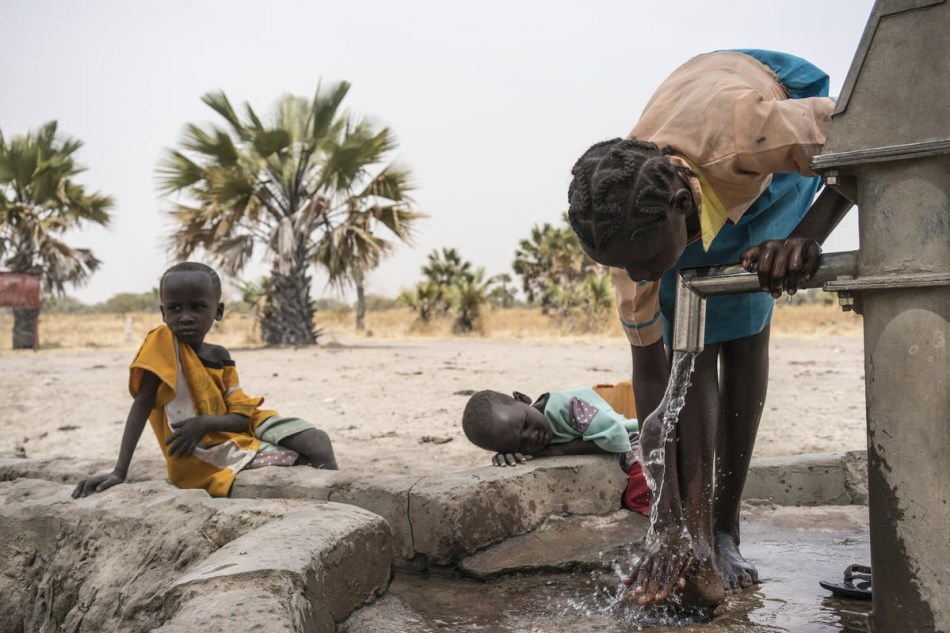As World Water Day approaches on March 22, nearly 27 million people do not have access to clean water in Somalia, South Sudan, northeastern Nigeria and Yemen. About 12% of the world population lacks clean drinking water, and water-related diseases account for 3.5 million deaths each year, more than car accidents and AIDS combined, according to the World Water Council.
In Africa, 319 million people, representing 32% of sub-Saharan Africans, don’t have safe drinking water.
.jpg)
A girl washes her legs at a water point about 2 1/2 miles from her home in Aweil, in South Sudan. World Water Day is March 22.
.jpg)
A girl walks home with her brothers and friends after collecting clean water from a water point about 2 1/2 miles away from her home in South Sudan.
.jpg)
A young girl carries clean water home from a water treatment point built by UNICEF in Torit, South Sudan.

A boy sits next to a fetid pool of water in Aweil, in South Sudan.
.jpg)
A child collects water from a water point in Juba, South Sudan.
.jpg)
Residents get drinking water from a tanker in Bhopal, India, on the eve of World Water Day.
.jpg)
People cross the sewage line covered with plastic waste and other litter with the help of a makeshift raft in Mumbai, India.
.jpg)
An indigenous woman wearing traditional attire walks home after collecting water from a public tap on the outskirts of Hyderabad, India.
.jpg)
People bathe at an outdoor facility a day ahead of World Water Day 2017 in Karachi, Pakistan.

A traditional well is a major source of water in Bhaktapur, Nepal.

Filipino fishermen arrange a fishing net next to a sewage pipe at a village in the town of Bacoor in the Philippines.
According to latimes.com








